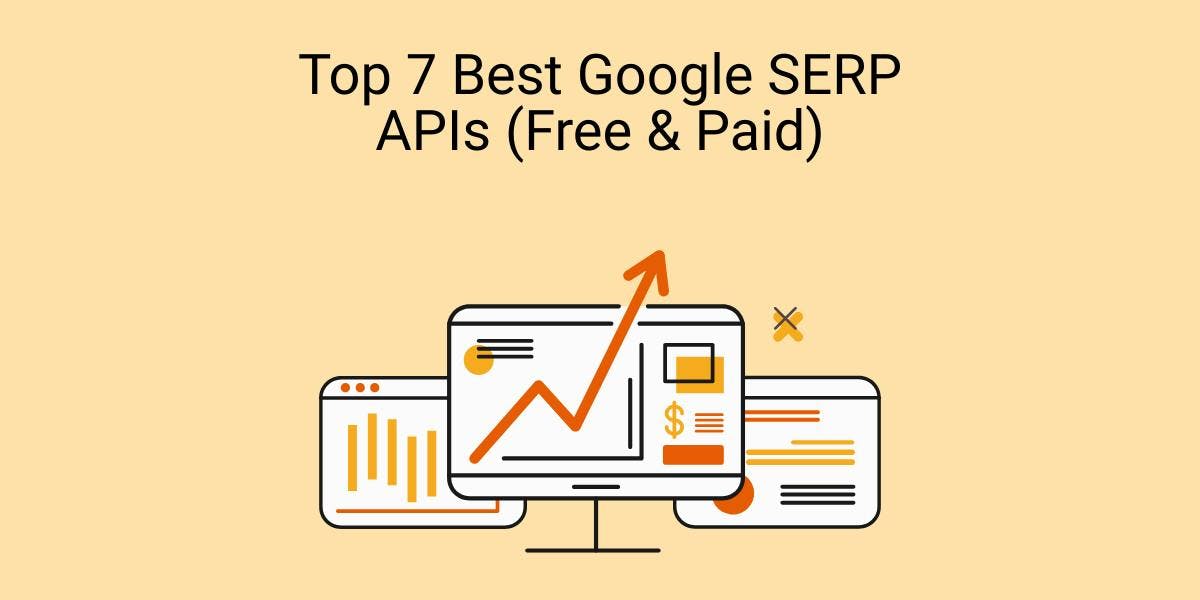The Ultimate Guide to Online Job Scraping, It is Pros and Cons
Suciu Dan on Jul 25 2023

The modern job market relies on online activities a huge deal. Companies look for talent online, and job seekers go on the internet to learn about new remote work opportunities. The majority of talent today looks for open positions online [4]. No wonder more automation solutions arise regularly.
Job data scraping is one such solution that organizations and individuals can use. In this guide, we've partnered with Jooble to cover all ins and outs of job data scraping.

The Why And How Of Scraping Online Job Postings Data
First of all, what is job scraping? It is an automatic process of gathering information about job postings online. To do that, a company or individual creates a script that crawls sites and collects information in one file. Such data might be used in a mobile app, a spreadsheet, or a database.
For example, such a bot or script can collect critical data from a posting, namely:
- Job title;
- Employer;
- Salary range;
- Location;
- Date of posting;
- Type of position (full-time, part-time, remote, etc.)
All this information goes to one designated place, whether a database or a spreadsheet.
Why Use Job Scraping?
Now let's talk about why companies or individuals create such scripts and collect job posting-related data.
There are several significant reasons to do it:
- Organizations might look for job market statistics and trends for their own hiring process;
- Individuals can use it to streamline their employment-seeking efforts. Instead of manually looking through sites, one can get all the information in one place;
- Such algorithms power different applications and solutions with job aggregator functionality;
- Governmental agencies can use it for statistical purposes.
For example, Jess DiBiase published a case study of scraping data from the US Bureau of Labor and Statistics [1]. Here the author explains the steps of building the algorithms and creating data frames. Based on it, the author was able to produce analytical data sets to see the percent of growth by occupation with the average salary ranges.
Another example of usage is the research by Boro Nikic (Statistical Office of the Republic of Slovenia) for the International Conference on Big Data on Official Statistics [2]. The study shows the steps in creating such an algorithm and the work with received data.
Sources of Important Data
The next question to answer is where is the information coming from. Scraping can collect data from all open websites online. However, it is essential to know which ones are of use for a specific purpose.
Here are the most crucial sources of information.
Career Pages
Almost every company or organization has a page with open positions on their sites. It is often the first place where the posting appears. Such pages have relevant and fresh information. But going to every company's page manually is redundant and time-consuming. Instead, a scraping algorithm can be used.
Job Boards
Another crucial source of information is the job board segment of the internet. Nowadays, such sites account for every 5th hire globally. Also, job boards attract half of all applications online [3]. There are plenty of sites and aggregators out there. Some focus on specific industries; others work with all types of offers. Collecting them all in one allows saving a tremendous amount of time.
Social Media
Sites like LinkedIn, Facebook, or Instagram can also give a lot of valuable data. However, being careful when scraping such sites is essential because they often restrict such activities. So particular legal issues arise from trying to collect information from Facebook, LinkedIn, and Craiglist.
ATS
A lot of big companies use applicant tracking systems. And those also give a lot of data that can be used for statistics or research.

How Companies Use Such Data
As for individuals, the usage is relatively straightforward. One can build a solution to automate job seeking or do personal research. As for organizations, they can benefit from collecting information in several ways, namely:
- Build an aggregator. If someone wants to create a site like Jooble or a similar app featuring various postings, they must make such an algorithm. It allows easily and automatically finding new offers for the app/site.
- Companies can also learn more about salary trends via such an analysis. It can be helpful if a company starts a new department and needs research in order to budget the extension. Or an HR department may want to know for sure that their offer is within the industry range. Otherwise, a business might miss a talent.
- Generate leads among various companies and employers.
- Labor market analysis. An organization can learn more about what professionals are in demand or what trends prevail in the current labor market. Such a purpose is expected in real estate, EdTech, consulting, and HR.
- Analyzing competition. By looking at what professionals your competitors are looking for, you can figure out what they are aiming at. For instance, they may be hiring several AI engineers, which signifies a potential AI-related project.
How the Process Works
If you want to create an information scraping algorithm, you need a specialist on board, along with an effective strategy.
The draft plan for the design, development, and application of the job data scraping tool looks like this:
Set the goal. As with any other strategy, starting with what you want to achieve is important. The objectives will define all the following steps. Do you need competitors' analysis? Or are you looking into market trends in terms of salaries? The data you are looking for impacts the frames.
Identify the information sources. The next step is to define the most valuable sites for collecting the desired information. If you decide to include Facebook or LinkedIn in the set, be sure to stay mindful of potential legal issues.
Decide on the scraping tools to use. It is where a professional developer comes into play. Only an expert can advise on what tools are out there and what can be used safely for the company's objectives.
After choosing the tool, the developer builds and implements it. Now the information is collected. It is essential to decide how you are going to store and analyze it.
The next step is working with the acquired information. Start with deleting duplicates. A lot of times, the exact offers are posted on different sites. If you do not delete copies before analysis, the results will not be accurate.
Set data frames. At this stage, you must decide what perspective to use for reports. What you are looking for and how it can be presented in a comprehensive way. It can be an infographic or a text report.
After the data frames are set, it is time to form reports. Now you have the information you've been looking for.
Potential Risks of Job Scraping
Besides potential legal issues with specific social media sites, such a process has other cons. Treating them as complications that should be addressed immediately is vital.
The first one is the diversity of sources. It is easy to decide to use all the sources of information out there. However, all sites have different structures. So a developer needs to create a script that works for each particular structure. The bot needs to know where the information is on the page to get it.
The simple algorithm that works with one particular type of website architecture won't work on another one. So it is important to decide what sources to use and how to establish the project's complexity, longevity, and price.
The second risk is dealing with anti-scraping solutions. Some sites use them to protect information from others. These solutions come in various forms, from sign-in features to IP blocks. Maybe you won't be able to scrap some of the sites you want to. Or you'll have to come up with a creative solution to overcome such measures.
And the third issue is the cost of the project. It can be very affordable or quite expensive based on the scope and the goals. For example, if you want to collect some data once from a couple of sites, it will be quick and relatively cheap. However, the price will grow significantly if you need constant updates from various websites.
However, there are ready-to-use scraping programs like Octoparse that an individual or a company can use. They are not ideal as they are more generic. It means they are not built to fit your unique needs and requirements. Yet, they are useful for general research purposes.
Ready-to-use solutions are relatively cheap and usually based on a subscription. Anyone can use them without any coding expertise. Such software is scalable, fast, and effective. But there is a learning curve. Also, there is little to no customization options, which is the main disadvantage.
Another alternative to developing an in-house solution is partnering with a company that offers data-scraping as a service. In such a case, a company gets a custom approach. It is more expensive approach compared to already available software.
Key Takeaways
- Job data scraping gives access to valuable insights;
- Organizations and individuals can use it to analyze market trends, uncover new opportunities, or do a competitors' analysis;
- A company can build an in-house solution, use an already created software, or partner with a service provider;
- The strategy and approach are crucial for successful data collection and analysis;
- When working on a strategy, it is essential to acknowledge and address the potential risks.
Sources
News and updates
Stay up-to-date with the latest web scraping guides and news by subscribing to our newsletter.
We care about the protection of your data. Read our <l>Privacy Policy</l>.Privacy Policy.

Related articles

Top 7 Google SERP APIs Compared: WebScrapingAPI, Apify, Serp API & More - Best Value for Money, Features, Pros & Cons


Learn how to scrape JavaScript tables using Python. Extract data from websites, store and manipulate it using Pandas. Improve efficiency and reliability of the scraping process.


Discover how to set up and utilize the Python Requests Proxy module. You can avoid bans and overcome web scraping challenges with the appropriate proxy settings.
